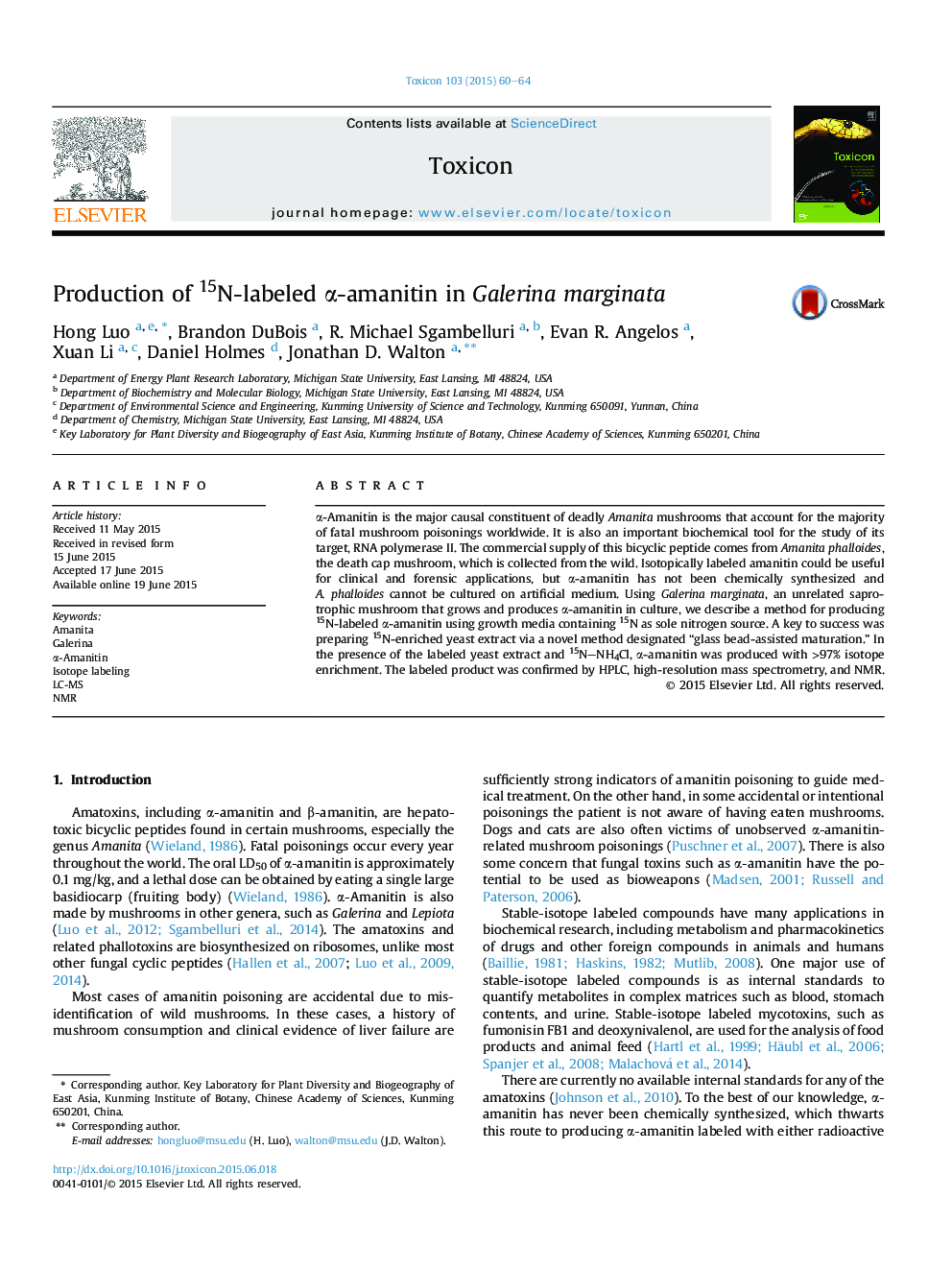| Article ID | Journal | Published Year | Pages | File Type |
|---|---|---|---|---|
| 8395407 | Toxicon | 2015 | 5 Pages |
Abstract
α-Amanitin is the major causal constituent of deadly Amanita mushrooms that account for the majority of fatal mushroom poisonings worldwide. It is also an important biochemical tool for the study of its target, RNA polymerase II. The commercial supply of this bicyclic peptide comes from Amanita phalloides, the death cap mushroom, which is collected from the wild. Isotopically labeled amanitin could be useful for clinical and forensic applications, but α-amanitin has not been chemically synthesized and A. phalloides cannot be cultured on artificial medium. Using Galerina marginata, an unrelated saprotrophic mushroom that grows and produces α-amanitin in culture, we describe a method for producing 15N-labeled α-amanitin using growth media containing 15N as sole nitrogen source. A key to success was preparing 15N-enriched yeast extract via a novel method designated “glass bead-assisted maturation.” In the presence of the labeled yeast extract and 15N-NH4Cl, α-amanitin was produced with >97% isotope enrichment. The labeled product was confirmed by HPLC, high-resolution mass spectrometry, and NMR.
Related Topics
Life Sciences
Biochemistry, Genetics and Molecular Biology
Biochemistry, Genetics and Molecular Biology (General)
Authors
Hong Luo, Brandon DuBois, R. Michael Sgambelluri, Evan R. Angelos, Xuan Li, Daniel Holmes, Jonathan D. Walton,
